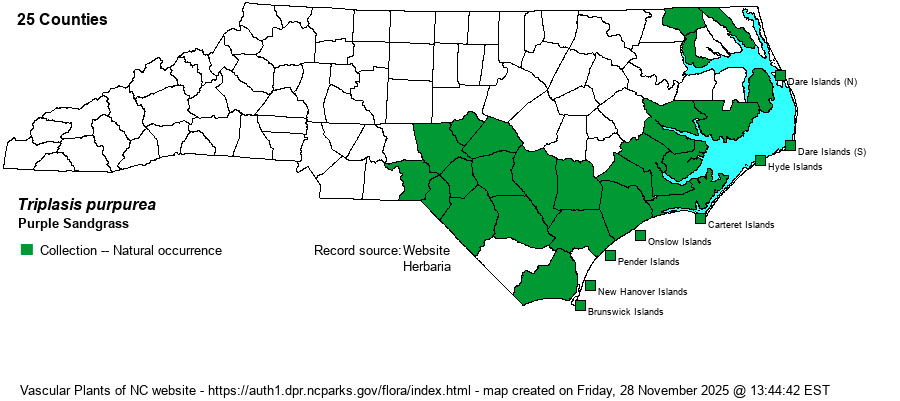| Author | (Walter) Chapman | |
| Distribution | Sandhills, Coastal Plain, Outer Banks, and other barrier islands; absent from much of the northwestern Coastal Plain.
Coastal Plain and maritime, NH to FL and TX; inland to NM, CO, NE, WI, and IL; Mex., C.R. | |
| Abundance | Frequent throughout, except of spotty collection occurrence in the northern Coastal Plain. The website editors suggest a State Rank of S4S5 owing to its numerous presence across much of the eastern part of the state. | |
| Habitat | Xeric sand and nutrient-poor sandy soil with little competition: sand dunes, interdune flats and maritime dry grasslands, openings in maritime woodlands, bay rims, roadsides, sandhills, pine-scrub oak areas. | |
| Phenology | Flowering and fruiting August-October. | |
| Identification | This weak-looking annual grows 1-2 feet tall, a few to several stems from the base. The leaves are at most 2 mm wide. The terminal inflorescence is composed of 3-7 well-spaced spikelets, usually purplish and 3-4 flowered. It is very similar to Perennial Sandgrass (T. americana), but the stem internodes are glabrous (vs. pubescent in that species). | |
| Taxonomic Comments | None
| |
| Other Common Name(s) | None | |
| State Rank | S3? [S4S5] | |
| Global Rank | G4G5 | |
| State Status | | |
| US Status | | |
| USACE-agcp | | |
| USACE-emp | | |

